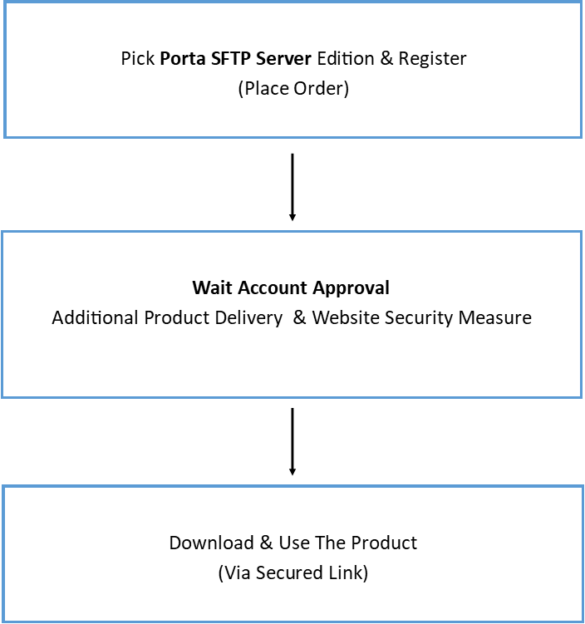In today’s digital landscape, secure file transfer protocol (SFTP) has become an essential tool for organizations to manage sensitive data. With the increasing number of cyber threats and data breaches, it’s crucial to have a robust security measure in place to protect your organization’s data. One effective solution is to use an on-premises SFTP server. In this comprehensive guide, we’ll delve into the benefits of using an on-premises SFTP server, explore how it can help your organization stay secure and compliant, and provide expert tips for implementing and managing this powerful security tool.
What is an On-Premises SFTP Server?
An on-premises SFTP server is a physical or virtual server that runs the SFTP protocol on a private network, providing a secure connection between authorized users and the organization’s data. This solution allows organizations to maintain control over their sensitive data, reducing the risk of unauthorized access or data breaches.
Benefits of On-Premises SFTP Servers
- Improved Security: On-premises SFTP servers provide an additional layer of security against external threats and cyber attacks. By controlling who can connect to the server, organizations can limit exposure to potential security risks.
- Data Sovereignty: With on-premises SFTP servers, organizations retain full control over their data, including encryption keys, access controls, and audit trails. This ensures that sensitive information remains within the organization’s custody, reducing the risk of data breaches or unauthorized access.
- Network Security: On-premises SFTP servers operate on a private network, which provides better protection against network-based threats such as malware and phishing attacks.
- Performance and Reliability: On-premises SFTP servers offer more consistent performance and reliability, as they are not subject to network congestion or latency issues common in remote access scenarios.
- Data Retention and Archiving: With on-premises SFTP servers, organizations have full control over data retention and archiving processes, ensuring that sensitive information is properly managed and disposed of according to regulatory requirements.
- Integration with Existing Infrastructure: On-premises SFTP servers can be easily integrated with existing infrastructure, such as authentication systems, access controls, and other security measures, making it easier to manage user access and permissions.
- No Vendor Lock-in: By hosting the SFTP server on-premises, organizations avoid vendor lock-in, ensuring that they are not reliant on a third-party service for file transfer and management.
- Regulatory Compliance: In industries with strict regulatory requirements, such as PCI-DSS, HIPAA, or GDPR, on-premises SFTP servers provide the necessary level of control and security to meet these regulations.
- Disaster Recovery: With on-premises SFTP servers, organizations can maintain a disaster recovery plan in place, ensuring that sensitive data remains secure even in the event of a disaster or outage.
- Cost-Effective: In the long run, hosting an on-premises SFTP server can be more cost-effective than relying on cloud-based services, as there are no subscription fees and minimal maintenance costs associated with maintaining the infrastructure.
Choosing the Right On-Premises SFTP Server Solution
When selecting an on-premises SFTP server solution, consider the following factors:
- Security Features: Look for solutions that offer robust security features such as encryption, access controls, and audit trails.
- Performance: Choose a solution that provides consistent performance and reliability, even in high-traffic scenarios.
- Scalability: Select a solution that can scale with your organization’s growth, providing flexibility and adaptability.
- Integration: Consider solutions that integrate seamlessly with existing infrastructure and security measures.
- Support and Maintenance: Look for vendors that offer comprehensive support and maintenance packages to ensure your SFTP server remains secure and up-to-date.
Best Practices for Implementing an On-Premises SFTP Server
- Conduct a Security Risk Assessment: Identify potential security risks and vulnerabilities in your organization’s current systems and processes.
- Choose the Right Solution: Select an on-premises SFTP server solution that meets your organization’s specific needs and requirements.
- Implement Access Controls: Establish robust access controls, including authentication, authorization, and accounting (AAA) mechanisms.
- Regularly Update and Patch Software: Stay up-to-date with the latest security patches and software updates to prevent vulnerabilities.
- Monitor and Audit Activity: Regularly monitor and audit SFTP server activity to detect potential security threats.
Expert Tips for Managing On-Premises SFTP Servers
- Use a Secure Connection Protocol: Use a secure connection protocol such as SSL/TLS to ensure that data is encrypted during transmission.
- Implement Multi-Factor Authentication: Implement multi-factor authentication to prevent unauthorized access to the SFTP server.
- Regularly Backup Data: Regularly backup sensitive data to prevent loss in case of a disaster or outage.
- Monitor Server Performance: Monitor server performance to ensure that it remains reliable and efficient.
- Stay Up-to-Date with Security Patching: Stay up-to-date with the latest security patches and software updates to prevent vulnerabilities.
Real-Life Examples of On-Premises SFTP Servers in Action
- Banking and Finance: Many banks and financial institutions use on-premises SFTP servers to securely transfer sensitive financial data.
- Healthcare: Healthcare organizations use on-premises SFTP servers to securely share medical records and patient information.
- Government Agencies: Government agencies use on-premises SFTP servers to securely transfer sensitive government data.
- Retail and E-commerce: Retail and e-commerce companies use on-premises SFTP servers to securely transfer sensitive customer data.
Conclusion
On-premises SFTP servers provide a secure and reliable solution for organizations to manage sensitive data. By implementing best practices and expert tips, organizations can ensure that their on-premises SFTP server remains secure and up-to-date. Whether you’re in the finance, healthcare, government, or retail industry, on-premises SFTP servers are an essential tool for protecting sensitive data.






